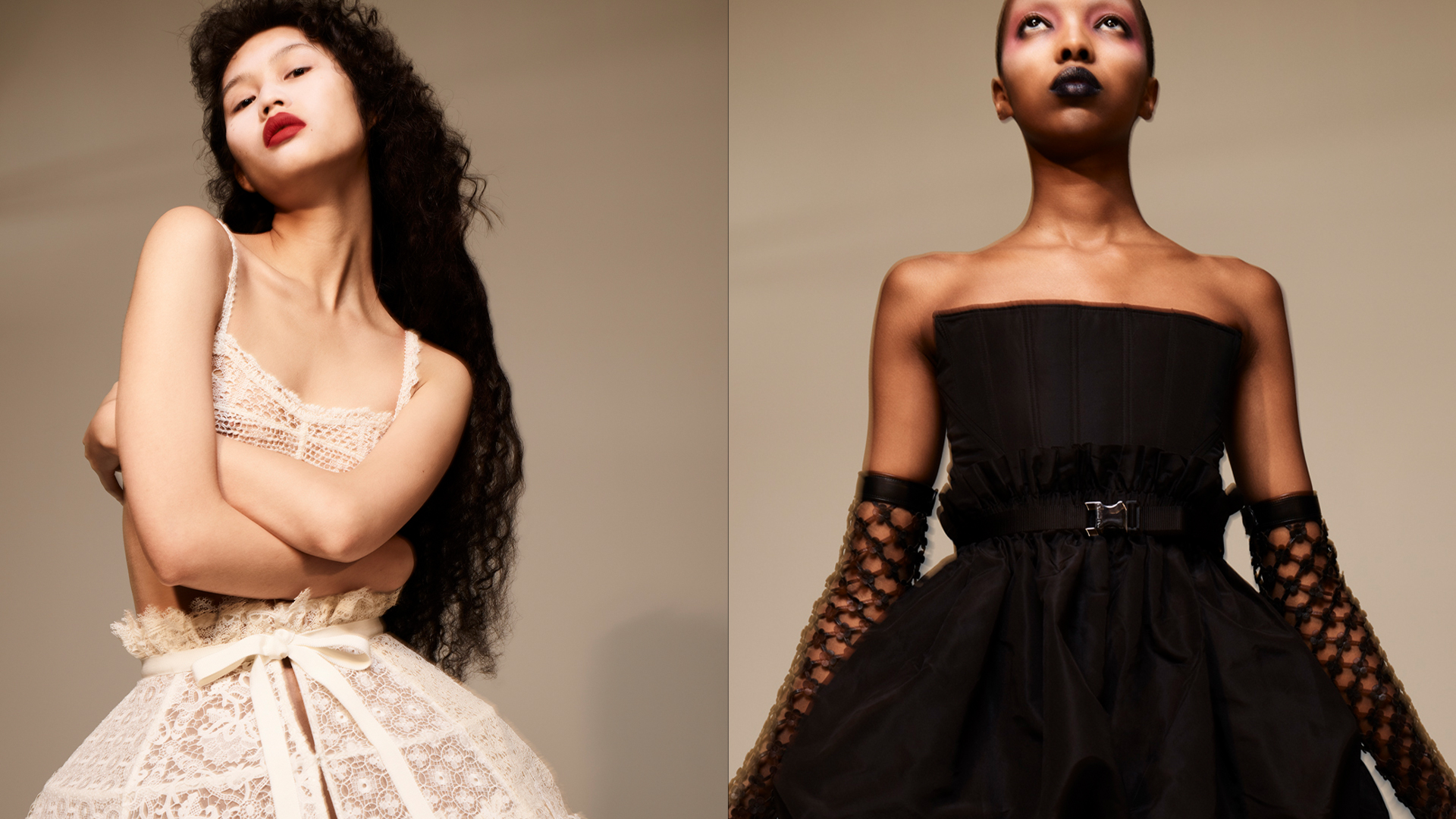This story originally appeared in i-D’s The Timeless Issue, no. 371, Spring 2023. Order your copy here.
Before he revolutionised the world of fashion with yards of skirting and wasp-waisted Bar jackets, Christian Dior was a gallerist. For Dior’s current Creative Director, Maria Grazia Chiuri, it’s perhaps the most fascinating thread in the couturier’s illustrious legacy – more so than the lily-of-the-valleys and satin ball gowns. In her six years at the helm of the French house, she has used Mr. Dior’s curatorial roots as a bridge to her own mission statement: namely, to commission and support as many female artists, writers, craftspeople, and photographers as possible. After all, Dior is the fashion house that has carved the very silhouette of femininity throughout most of the last century – albeit through the eyes and hands of men. Why not hand it over to women?
When she got the job it was a no-brainer, considering she was the first female Creative Director in its history. “I grew up in the fashion system, so I know very well how difficult it is for women to work within it,” she explains in her book-lined office in Paris. Her idea, she explains, was to draw from the women-led literary and artistic salons that Paris was once famous for to create a global sisterhood that could dismantle fashion’s male gaze.

Her first collection in 2016 set the tone. A model opened the show in a long skirt and a T-shirt emblazoned with the slogan “We Should All Be Feminists”, the title of a 2014 essay by Chimamanda Ngozi Adichie. Looking back, it was a bold statement in support of a cause still in the nascent stages of its fourth wave. Although it may have seemed rudimentary at the time: a T-shirt? At Dior, the world’s biggest couture house? In hindsight, it forecasted the kind of graphic, easily digestible urgency that would shape a fashion era defined by its refraction through Instagram. The medium and the message constantly in dialogue and competition with each other.
Many of the tentpole issues of feminism’s revival – the gender pay gap, male gaze, and the consequences of men in most positions of power – were not lost on Maria Grazia. She joined the house in her 50s following in the footsteps of six men, and has witnessed cultural shifts such as #MeToo, the rise of Trump, and the overturning of Roe v Wade during her tenure. “It’s impossible not to be political and a designer now,” she says of her role “People think that fashion is only about clothes, and that it doesn’t relate to the female body. There is an idea of fashion that is very superficial, very fun, and something to be enjoyed, which can be true, but I started to work in fashion because it was about having the freedom to express myself and to choose how I wanted to represent myself.”
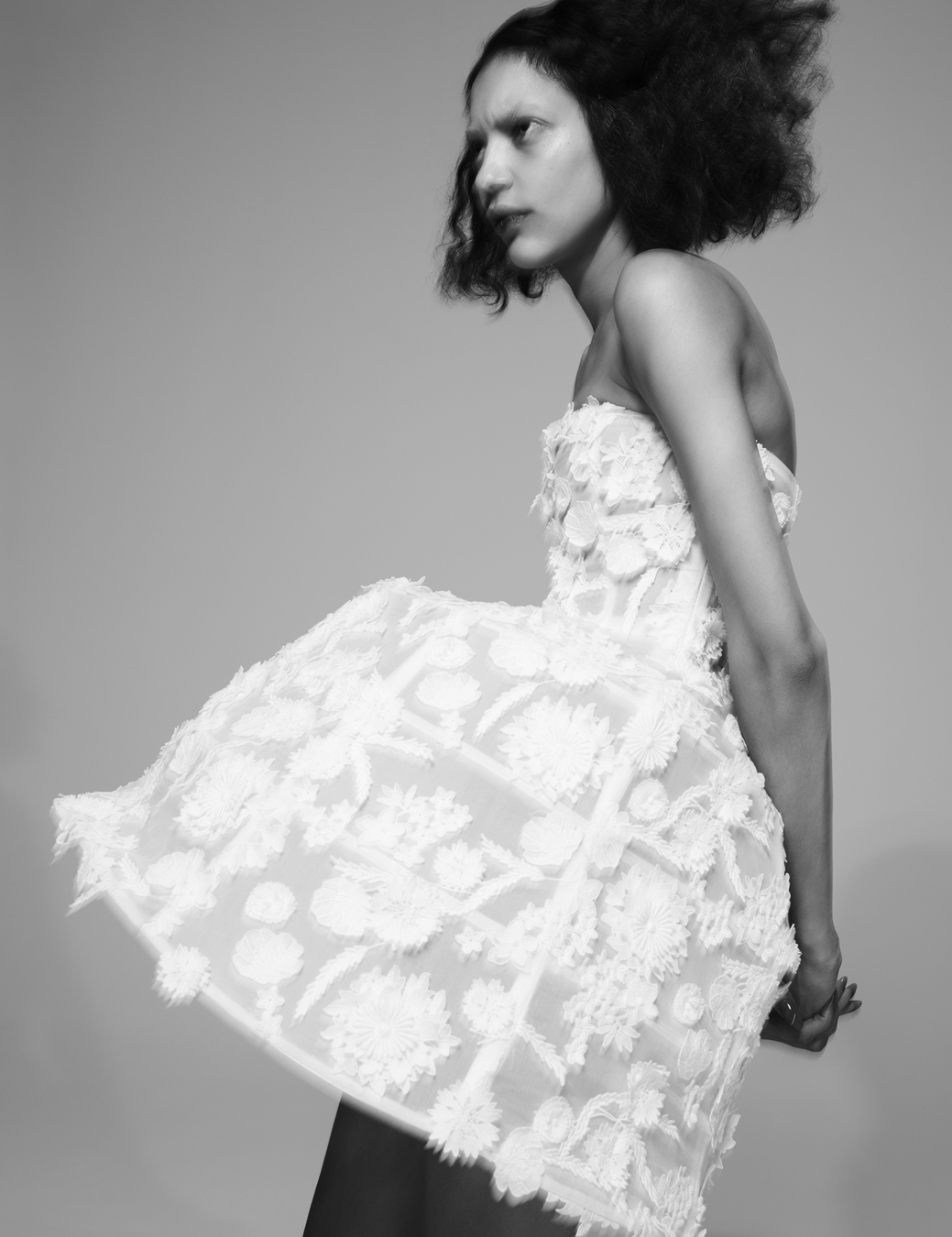
Having grown up in Rome with liberal parents – and a typical Italian family dynamic, she remembers, where her grandmother was in constant disagreement with her mother – she started her career at Fendi. It was a matriarchy run by five sisters, where she helped develop the famous Baguette bag and hired a young designer called Pierpaolo Piccioli, who she would eventually go to Valentino with, and succeed the man himself as co- creative directors. It was her daughter Rachele, who went through a stint as an anti-fashion feminist during her years studying at Goldsmiths in London, who encouraged her to step into the spotlight. “She’s from another generation,” Maria Grazia reflects. “She supported me a lot from the beginning because I had my doubts about coming to Paris as a 52-year-old, moving completely out of my comfort zone. It was like starting all over again.”
However, the carte blanche that came with the job allowed her to really make her mark. Her first port of call was hiring a female photographer, Brigitte Lacombe, to shoot Dior’s campaigns, which proved more difficult than she anticipated. “The photographers at the time had only been men. I told them I wanted a woman to shoot the campaigns and they said to me: ‘Sorry, there are no women photographers!’ I mean, we are not speaking about an up-and-coming photographer! Brigitte Lacombe has a huge career, but she has never shot a campaign!”
“What is power? Does it mean dominating others, or supporting them?” Maria Grazia Chiuri
She puts it down to the fact that male designers and photographers are often celebrated as creative geniuses, the ones who define fashion’s extreme silhouettes and theatrics, while women are pigeonholed as more understanding of everyday pragmatism and commerciality. Not that she sees that as a negative. “It depends on what you think of as creativity,” she asserts. “In my point of view, Gabrielle Chanel was a revolutionary because she created the modern woman.” She is quick to point out that her Italian background is imperative to her understanding of fashion, not necessarily rooted in couture but in craftsmanship and industrialisation. “My approach to creating shoes, bags, but also clothes, is really like an industrial designer: for me, to be comfortable is essential. It makes no sense to me that creativity should be uncomfortable because it’s my body in the clothes.”
You can see why, for so many women artists and intellectuals whose careers have often been spent navigating the patriarchy, her no-nonsense approach resonates. Often, approaching those very women – a wide range that includes Mickalene Thomas, Judy Chicago, Maripol, Linda Nochlin, and Penny Slinger – was a humbling experience for Maria Grazia. Many of them had never heard of her and had little interest in fashion, so she regularly started by personally writing them a letter. The result is often a process of persuasion, which is usually helped by offering the full heft of Dior’s resources to bring their work to a global stage. To Judy Chicago, a 2020 multifaceted partnership with Dior presented “the greatest creative opportunity I have ever had,” she explained at the time. The American artist went on to echo Maria Grazia’s modus operandi: “It brought my ideas and my art to a global audience because Dior has a global platform.”

“I understood immediately that in Dior there is a lot of space and I want to share this space and visibility with other artists,” Maria Grazia says, pointing out that within the art world, retrospectives and market prices for artworks are still subject to gender inequality. “Today, it’s very difficult for some artists to have an exhibition in a museum, which is why we use our show space like a gallery and give them the opportunity to show their magnificent artworks.” She recalls telling Judy Chicago that Dior’s legions of petite mains could bring to life her idea for an immersive yonic installation: again, pointing out that textile-based works have long been looked down upon in the art world because they are women’s work. “When I told her we could do it, she didn’t believe me. She was shocked because, for years, it was just her and her assistant making everything, which is why it took her so long to complete The Dinner Party,” the designer explains of Chicago’s seminal 1970s installation (it took her five years to complete). It comprised an enormous ceremonial banquet, arranged on a triangular table with a total of thirty-nine uniquely embroidered place settings, each commemorating an important woman from history, from Boadicea to Virginia Woolf.
It seems fitting that Maria Grazia’s SS23 collection for Dior was inspired by 16th-century Italian-born French queen Catherine de’ Medici, one of history’s enduring figures of female power. Her sartorial contributions to the French court included platform heels (to make herself appear more powerful and domineering), Italian lace, and corsets. The contrast between delicate lingerie and dramatically structured silhouettes led to one of her strongest collections, a meditation on the interiority of femininity and external power dressing. “I don’t feel this idea of power myself,” she demurs. “What is power? Does it mean dominating others, or supporting them? The idea that one woman has all the power, or even a man feels wrong. It’s completely different to work in a community, to be at the service of the others.”
So to honour Dior’s new legacy of engagement with the work of female artists, creators, photographers, poets and writers, we asked a selection of Maria Grazia’s collaborators to pose one question to the designer…

Sharon Eyal, dancer and choreographer: How close are your dreams to your reality?
I am very lucky to have worked in companies that helped me to realise my dreams. Especially now at Dior, because it was always my dream to work with other artists and their energies, so this idea that was in my mind at the beginning of my career is now possible.
Karishma Swali, managing and creative director of Chanakya International and the Chanakya School of Craft: As a preserver of global artisanal legacies, what advice would you like to give to those seeking to build a more inclusive world?
Craftsmanship is a universal language. When I started to work in fashion so many years ago it was concentrated in Europe and America, but now we can build a new system together in all these other countries. Fashion has the potential to connect many different people across the world.
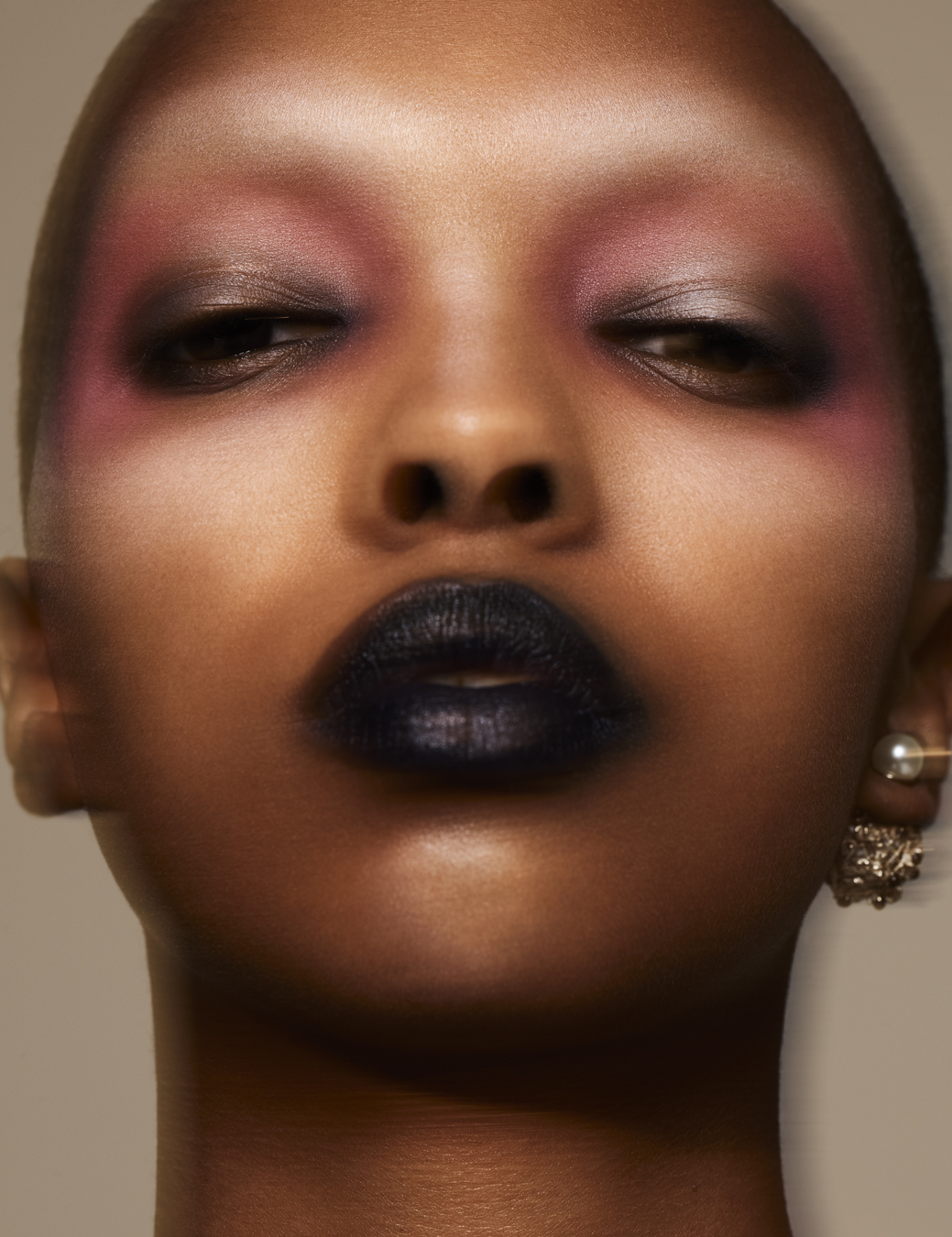
Olesia Trofymenko, painter and embroider: The question is probably from my own experience. Sometimes horrible or unpleasant events lead to positive consequences. The life story of Christian Dior and his sister, who was imprisoned in a German concentration camp during the Second World War, which eventually led to the creation of a world-famous fashion house, is a good example of this. Have you ever had a story in your life that contributed to a positive shift or achievement in your life?
I never had the sort of tragic experiences that could compare with Catherine Dior’s, but for the fashion world, the pandemic was something very hard. It was really a critical moment. But I also think about the war in Kuwait, the earthquake in Japan, the war in Ukraine. Sometimes we forget that we are a big family, we have colleagues around the world. In any case, we are a system that is quick to find solutions and then try to move into the future in an optimistic way. We are a community in our industry, which is an incredible feeling.
Tomaso Binga, performer, poet, and visual artist: What was the process that made you choose to collabo- rate with female artists?
My approach to working with artists is very spontaneous. I never think about the artists linked to a collection, but instead linked with my feelings. I might see an exhibition or some piece of art that can help to reflect about the time or relate to an argument that is linked with my work. There are no rules when I work with an artist; it is more about a curiosity. I want to know them, I want to be in conversation with them. And that’s the first thing that I say all the time with all the artists that collaborate with me is that I have this space, and I want to share it. It comes step by step from our dialogue, and it always changes depending on the artist. I remember the first time that I spoke with Eva Jospin, and she said she had the dream to realise a fully embroidered room, and I said, “It’s possible!” She was surprised that fashion has this capacity to realise her creativity.
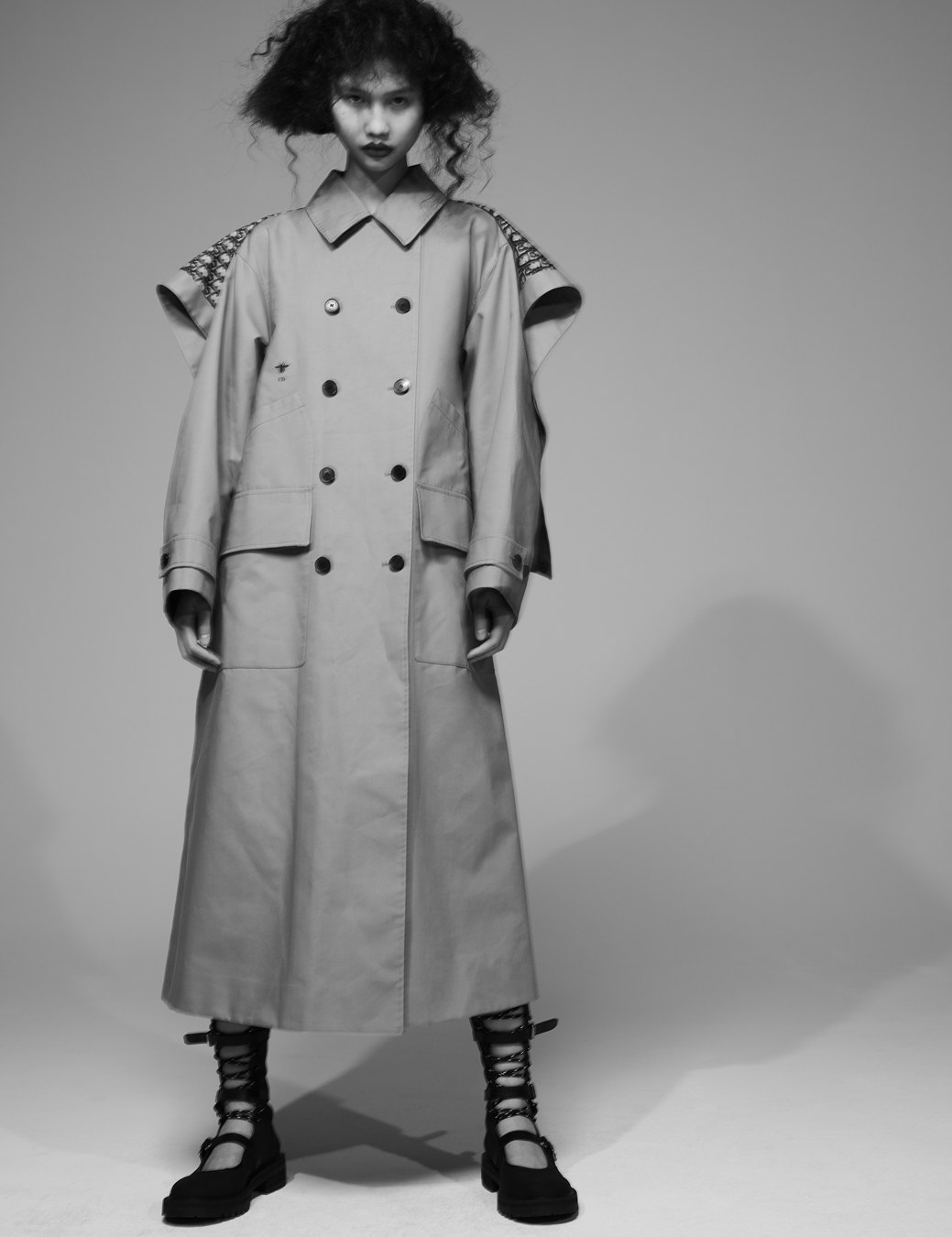
Silvia Giambrone, visual and performance artist: Feminism has made a proper revolution pointing out the political relevance of women‘s bodies. In the last few years though I have realised that politicising the women’s bodies has also had repercussions on the most spontaneous aspects of women’s bodies’ emotional expressions like sensuality or eroticism. What do you think about ‘femininity’ in relation to sensuality and eroticism?
For me, femininity really means to create something. I am really obsessed with this idea that we have to separate femininity from the shape of the body. It is so much more, in my point of view. It’s not easy because it comes from the past, especially at Dior! This is why I always ask these artists to help me find the right words and the right analogies to change it. The conversation that Christian Dior had with women was in 1947. Now our conversation is with a new generation. When I speak with young women that work in my office, it is another world. They have a completely different idea of sensuality.
Chimamanda Ngozi Adichie, writer: It feels as if the mainstream fashion industry still has a narrow view of what is considered ‘aspirational’. I know you personally believe in a more diverse and wide-ranging approach to fashion but are you optimistic or pessimistic that the mainstream industry itself will become increasingly more diverse, in terms of body size, ethnicity, etc?
I have no optimism and no pessimism; I am realistic. The real thing that I do is to create clothes that are wearable for women. I have the body of a woman, not a model. My approach is that my clothes should be worn by people of different shapes and sizes. The goal is that any woman can buy a Bar jacket and it will fit. I don’t believe in the idea that you can resolve the problem only with representation. We need two elements: culture to educate and stop body-shaming, and on the other side to build collections that are wearable for everybody.
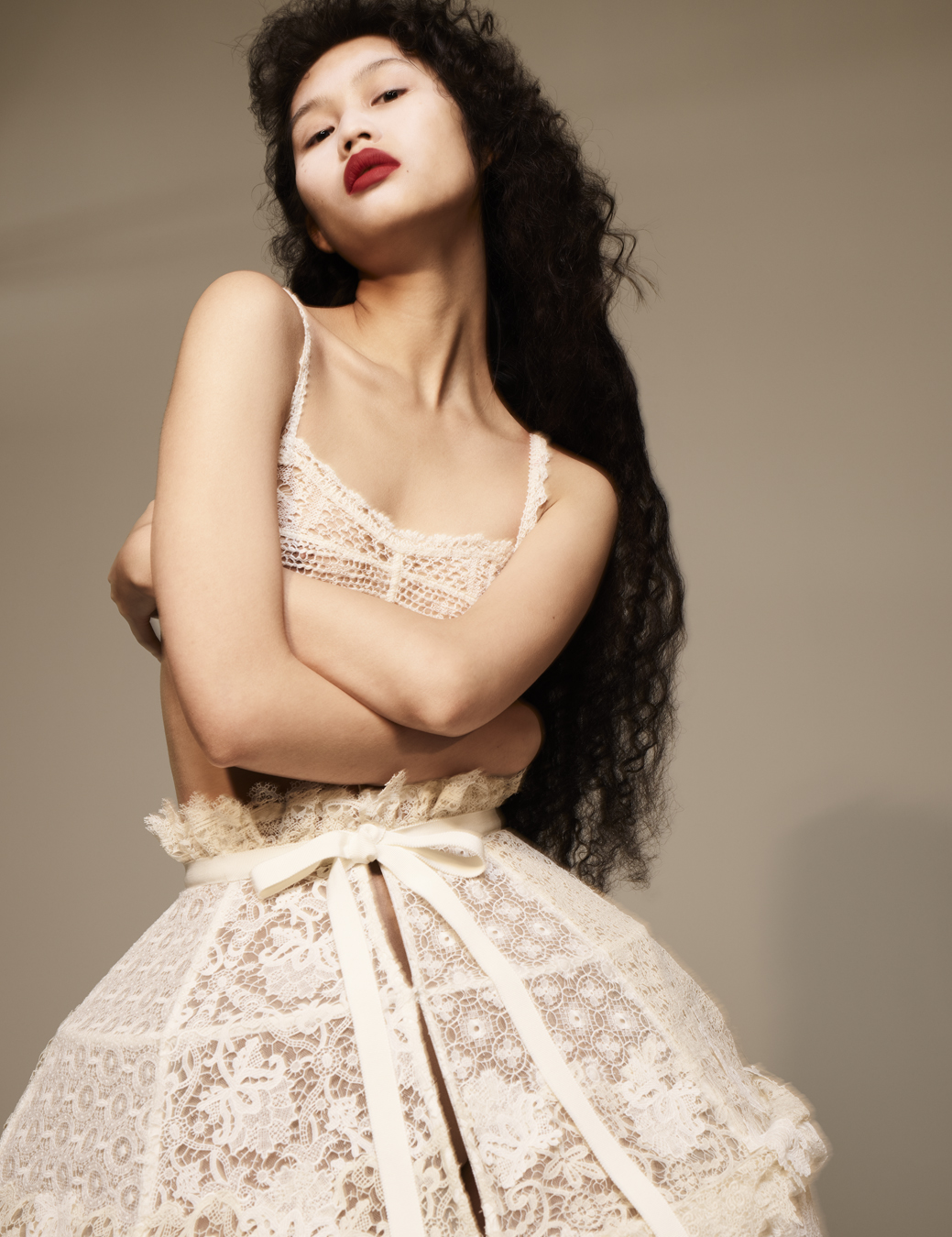
Brigitte Lacombe, photographer: It is one of your great qualities to be able to be attentive to others with a joyous and generous presence, even in the most stressful and chaotic situations. How are you able to always be 100% present in the meaningful moments of your life?
I believe in teamwork and that gives me the energy to create something. Even when I’m working late and want to go home and go to sleep.
Penny Slinger, artist and author: What do you consider to be the difference between the male gaze and the female gaze when it comes to the creation of fashion and couture and to portraying women?
I’ve worked in fashion for a long time and in the past, it is evident that women were just an object to look at. When I see how Brigitte Lacombe works, and how she has a dialogue with women when she is shooting so that they feel confident, it really is a different relationship. Similarly, I never think: “Oh, I need to dress women in this way”. Instead, I think: “What does she desire?”
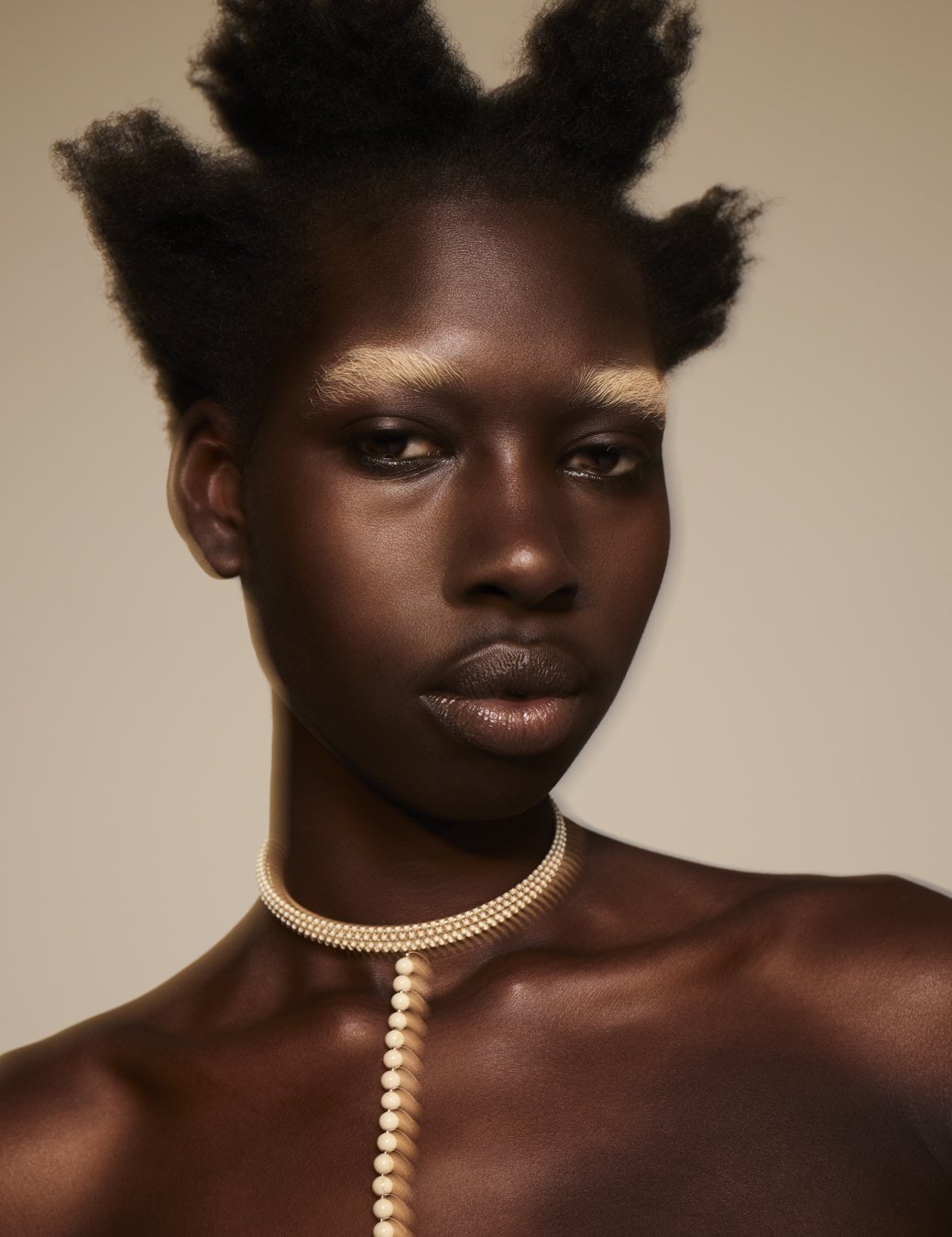
Fulvia Carnevale, philosopher: Can you imagine women being loved for their capacity of freedom rather than for the services that they provide? How could this happen?
It is very important to change the narrative. I think that this idea that women have to take care of others and be domestic is from another era. I was very lucky because my father and my mother gave me freedom, and I tell my children all the time: “I want you to be free.”
Judy Chicago, artist: How did you become a designer?
I never imagined it would be possible to arrive at this position. I had the opportunity to study and to work in companies where they gave me the opportunity to express myself. I worked very hard, but I never had an idea of how to become a creative director or open my own brand. I only wanted to do creative work. That probably helped me a lot because I was learning all the time.
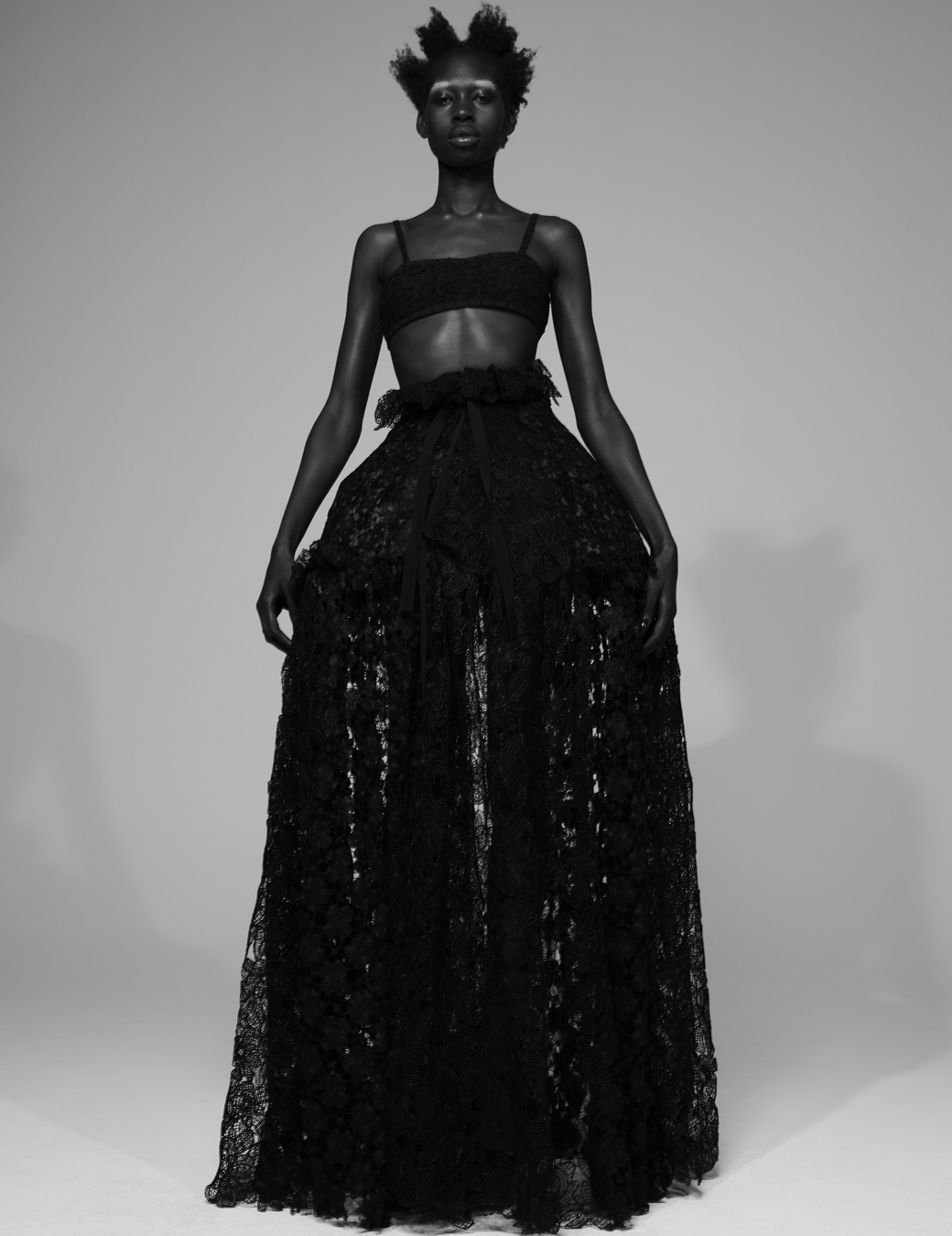
Eva Jospin, artist and sculptor: What is your link between fashion seasonality and the seasons of nature, between permanent changes and eternal returns?
Fashion changes all the time, like nature. Fashion speaks about the contemporary, but when you are inside a brand like Dior, you speak about heritage, too. So there’s something that has to move and something that has to stay; it is a real balance, also like in nature. Change is a big part of fashion, but everything returns too; albeit in a different way.
Maripol, artist, photographer and stylist: If you could change our world what would be the first thing you would do?
I would like to make the world more inclusive, there should be the same opportunities for everybody, the same freedoms.
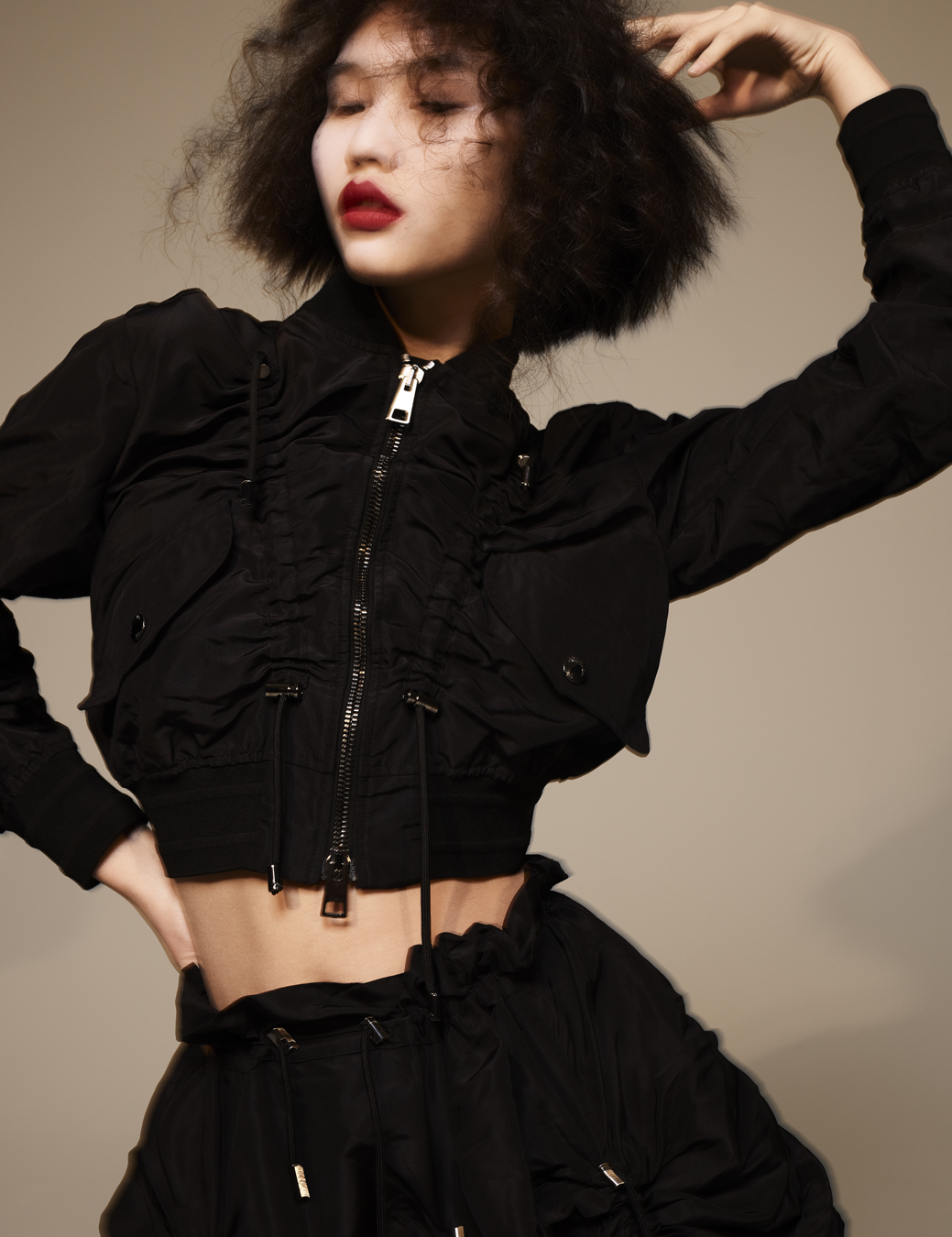
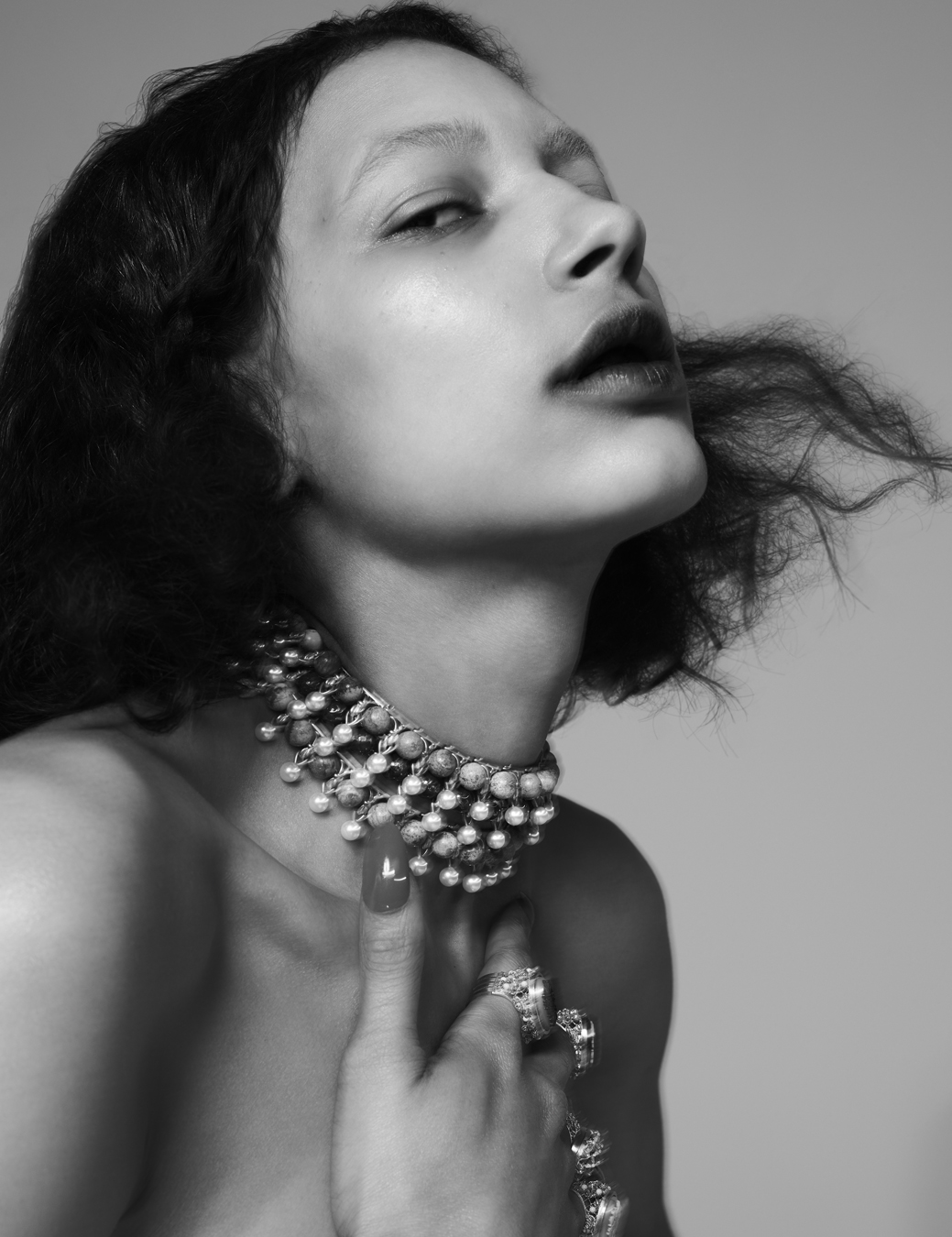
Credits
Photography Amy Troost
Fashion Malina Joseph Gilchrist
Hair Lucas Wilson at Day One
Make-up Fara Homidi at The Good Company Represents
Nail technician Michina Koide at Art Department
Lighting director Karen Goss
Photography assistance Jeremy Hall and Conor Ralph
Digital operator Alonzo Maciel
Styling assistance Umi Jiang
Hair assistance Sergio Estrada
Make-up assistance Nolan Eakin
Casting director Samuel Ellis Scheinman for DMCASTING
Casting assistance Alexandra Antonova
Models Ileya Herrera and MJ Herrera at One Management, Awet Aleu at IMG, Jinrong Huang at Next
All clothing, shoes and accessories DIOR
